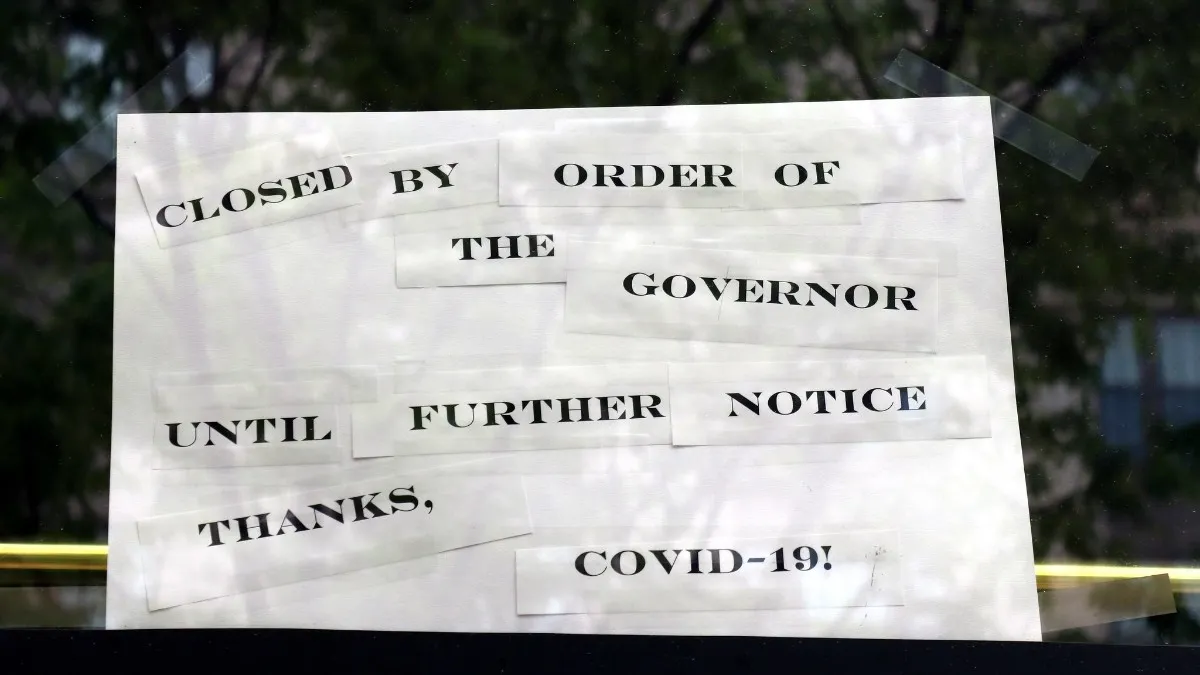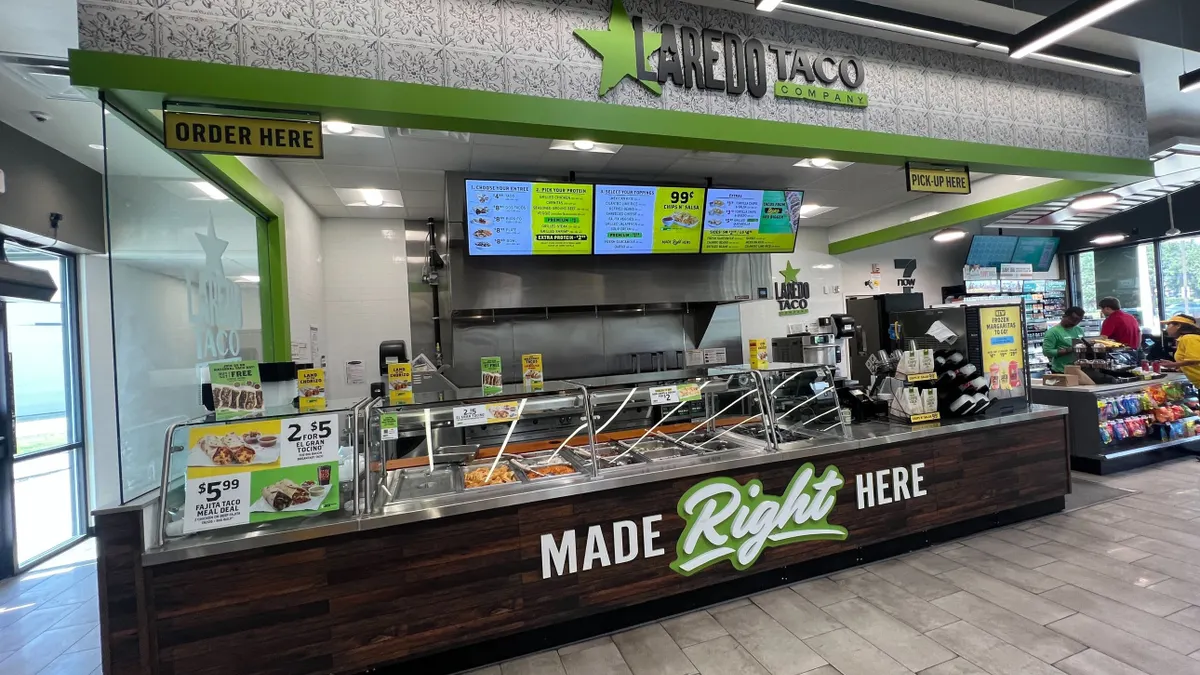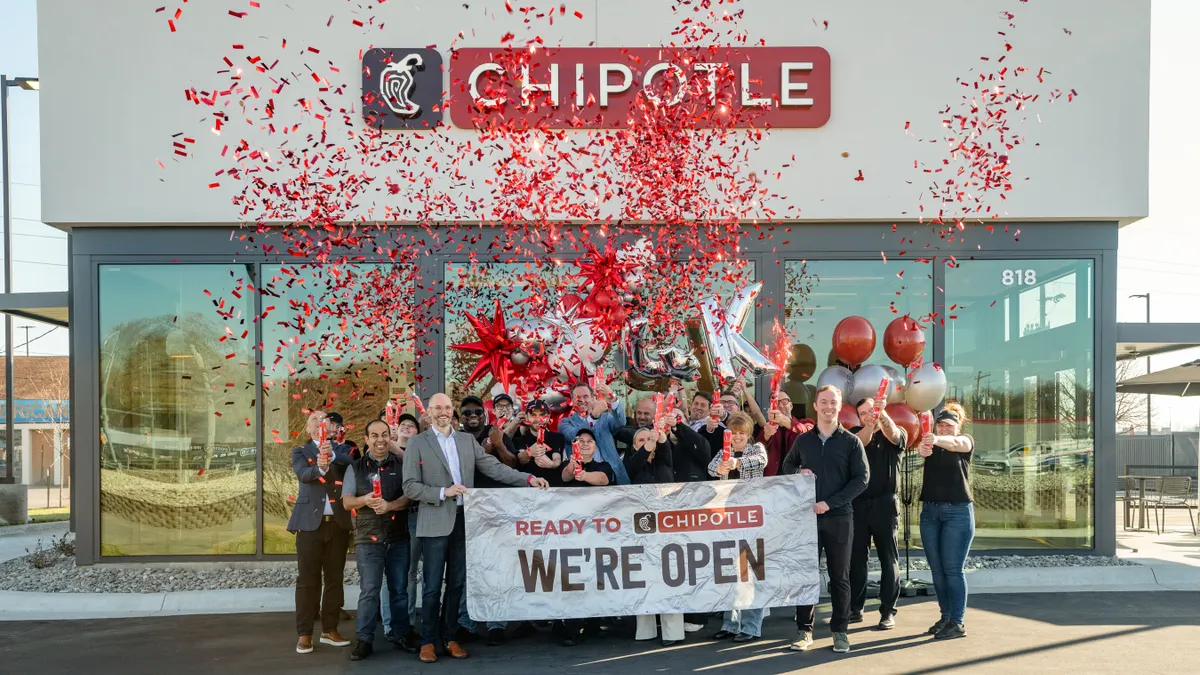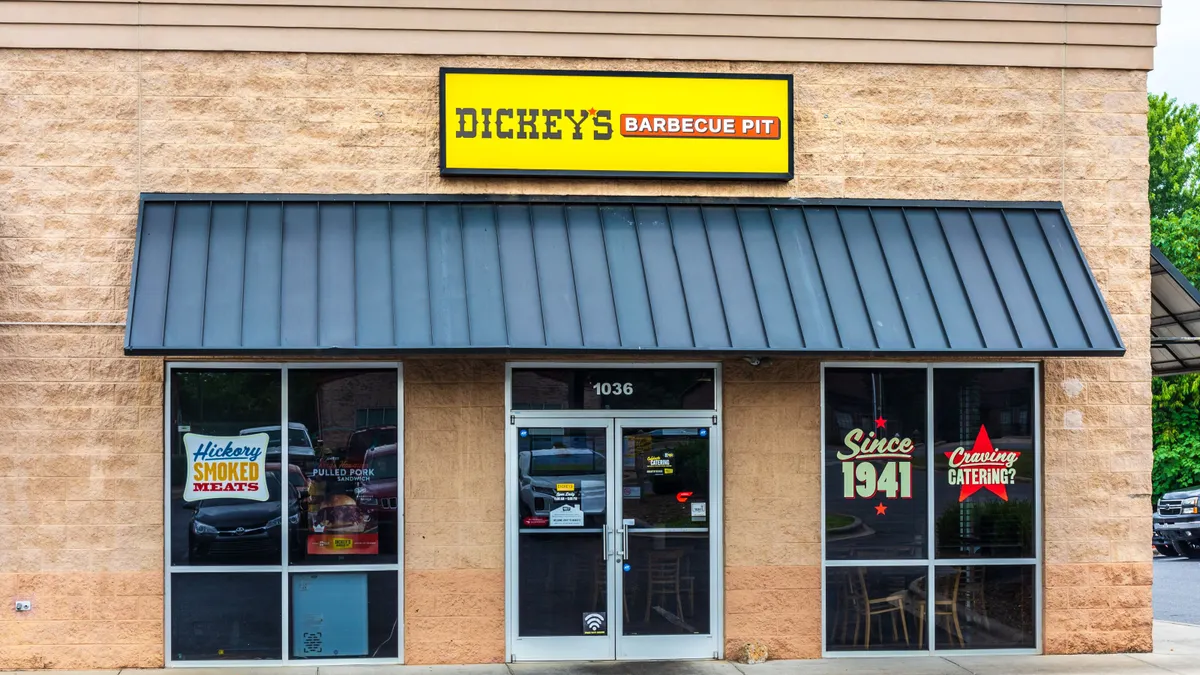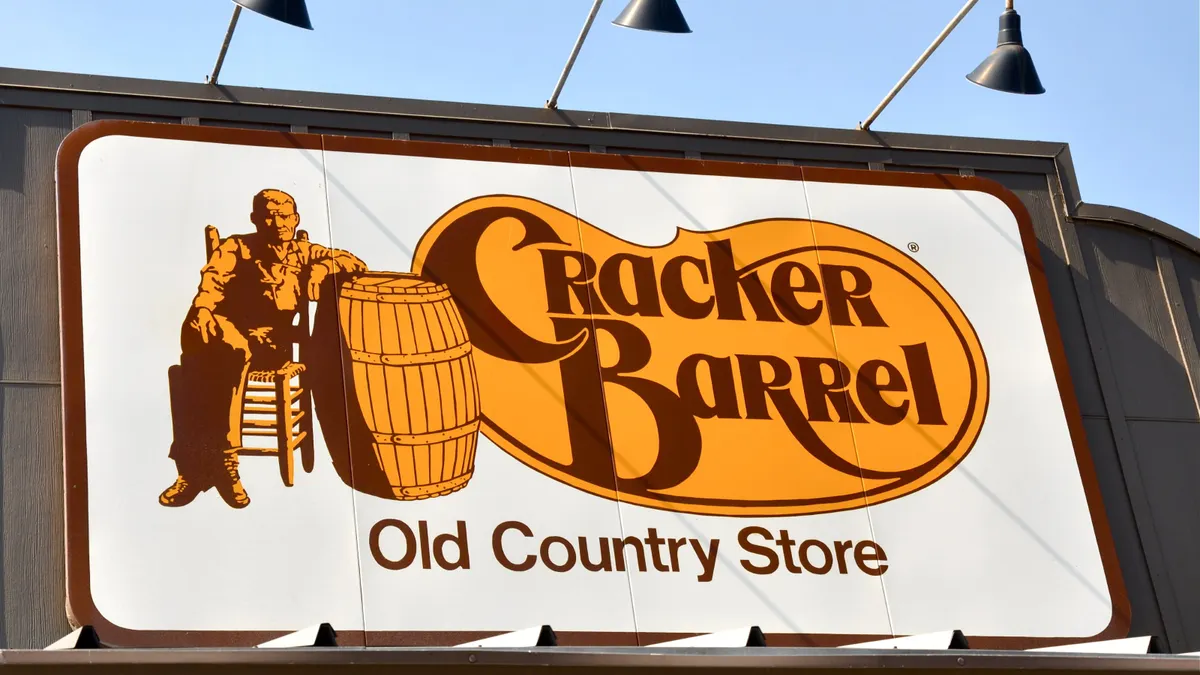No storm has been too strong to close a Waffle House. Customers could get a hot meal at most of its locations during Hurricane Florence. Kitchens continued cranking out eggs and hashbrowns during the catastrophic 2011 Joplin, Missouri tornadoes. It’s famous for toughing out the biggest natural disasters, to the point that a former FEMA administrator created the Waffle House Index to gauge the impact of storms. But on March 26, the novel coronavirus turned the index red when the chain closed over 420 restaurants and shifted the remaining 1,500 locations to delivery and takeout only.
Now that Georgia and Tennessee are easing dine-in restrictions starting Monday, Waffle House will be able to reopen a handful of locations in the state. But the chain isn’t immediately returning to normal operations.
“It is unrealistic to think that restaurants will be able to return to pre-COVID19 operations at this time,” the Georgia-based chain said in a statement emailed to Restaurant Dive.
As bars and restaurants prepare to reopen, they will have to comply with strict state-issued guidelines. Georgia has 39 rules specific to restaurants, such as allowing only 10 patrons per 500 square feet, no self-service drinks, encouraging the use of disposable menus and discontinuing salad bars and buffets. Tennessee requires restaurant employees to wear gloves and face masks and have their temperatures checked before each shift, operate at 50% capacity and allow no more than six diners at a table. Front-of-house surfaces will also need to be cleaned every two hours. Alaska allowed restaurants to reopen while Oklahoma began easing restrictions Friday. Colorado, Idaho, Florida, Indiana, Iowa, Louisiana, Mississippi, Montana, North Dakota, Ohio, South Carolina, Texas and Utah are easing restrictions this week.
“The people who are making decisions about how we’re going to reopen have zero knowledge of what it takes to actually operate the restaurant,” Jim Collins, CEO of Kitchen United and founder, owner and operator of Town Kitchen and Grill in California, said during a Kitchen United webinar on April 23. “But they are making their best decisions on what they know on public health. It falls to us in the restaurant community on what [reopening] means.”
Restaurants will have to reopen in stages, with stage one being the “safe at home stage,” where much of the country has been, Collins said. This is where people have stayed home and restaurants that are able to have offered to-go and delivery only. Stage two will likely include social distancing, where dining rooms are allowed to reopen, but at a percentage of capacity to ensure proper social distancing.
“Stage two to me is almost more frightening than stage one,” Collins said. “Most people know that the only thing worse than a closed restaurant is a half full restaurant.”
Experts have also said that fully opening dining rooms isn’t likely to happen until COVID-19 cases are at almost zero or there is a vaccine, which wouldn’t happen until a third stage, Collins said. He understands why restaurant operators are opening up now because this is a business decision and none of these decisions are easy, but he urged restaurants to have a plan.
“The more we sit back, take a deep breath, absorb some of this stuff and then start figuring out what it means and how it’s going to work, the better prepared we will be as we go from phase to phase,” Collins said.
And many Atlanta owners and chefs appear to be echoing this thinking, taking their time to bring back dine-in.
“The general consensus among that group is that they are not going to open Monday night,” Bo Peabody, co-founder of online reservation platform Seated, which works with casual and fine dining restaurants, told Restaurant Dive. His platform partners with about 100 Atlanta restaurants.
Peabody added that he would be surprised if more than 25 or 50 restaurants in Atlanta are available to book on Seated Monday night. Many Atlanta restaurants have already posted on social media that they won’t be opening Monday and many have called the governor’s decision to reopen “irresponsible” and “unsafe,” according to Eater Atlanta. Restaurants told The Washington Post that they are unsure that they could ensure the safety of their staff and customers.
“But there’s also the feeling that the ones who are ready and are willing [to open] will teach everyone else how to do it,” Peabody said. “I think everybody knows, whether they’re admitting it or not, that the pressure to open is going to … increase as every day goes by.”
Landlords will want rent payments, guests will want to return to their favorite spots and open competitors will start to get business that a closed business isn’t getting, he said.
“Operators who thought they would open June 1 will probably open May 15,” Peabody said.
When it comes to diners returning, Peabody said he expects there to be a continuum where people who are less comfortable with the idea of going out will wait a bit. But by the time these other customers come out, restaurants will be really good at maintaining necessary coronavirus safety standards, he said.
“Hopefully that will play itself out that way,” Peabody said. “That would obviously be ideal.”
How chains are gearing up to resume operations
It will likely be easier for large chains to more quickly develop and deploy new dine-in strategies. Restaurants with 30 or more locations, larger chains and even franchisees of a larger organization are a little more hopeful about the future, David Bagley, managing director at Carl Marks Advisors, which provides financial and operational services to companies in the middle market, including the restaurant sector, told Restaurant Dive. Compared to small mom-and-pop restaurants, these organizations have more resources and better connections with vendors.
“These people it sounds like have a lot more of a hopeful feeling, looking for that turnaround and can’t wait to get back open and are really positive about what’s going to happen over the next period of time,” he said.
Pret A Manger, which closed its 86 locations nationwide on March 17, will begin reopening select New York City locations on April 28, according to an email sent to Restaurant Dive. It adjusted its hours to serve customers from 8:30 a.m. to 3 p.m. for takeout and 10 a.m. to 3 p.m. for delivery through Grubhub/Seamless. The company expects to reopen shops on a biweekly basis as early as May.
Employees at the four locations that will open will be paid 1.5% their hourly rate. It also implemented several safety precautions, including no more than six customers — who must wear masks — inside the restaurant at a time and six-feet spacing outside the location as others wait to enter. The company also installed shields at the counters, put out hand sanitizer for customer use, and placed all cutlery behind the counter and passed out upon request. Only contactless payments, such as Pret App, Apple Pay or credit cards, will be accepted.
McDonald’s is working closely with franchisees on the best ways to reopen in areas where dining room restrictions are eased. It previously added wellness checks to determine if employees are fit to begin their shifts; employees answer different questions such as if they have any symptoms associated with COVID-19 or if they have been diagnosed with coronavirus. The company also added employee temperature checks, as well safety shields at drive-thrus and cash registers at the front counter.
Starbucks will reopen restaurants starting May 4 on a community-by-community basis during what it calls a “monitor and adapt” phase. The chain will deploy different methods, depending on the location, that it has been testing in over 300 stores in the U.S., such as contactless service, entryway pickup, curbside delivery and home delivery. It is also encouraging employees in high-risk demographics or who live with healthcare workers to work with their team leaders to find lower risk environments to work at, like at a delivery-only location.
Chipotle, has been considering keeping condiments, like Tabasco, behind the counter and sanitizing the bottles in between customer uses. Cutlery could also be removed from the beverage stations.
Prior to takeout-only restrictions, Waffle House was already formulating a protocol to keep employees and customers safe, the company said. The waffle chain incorporated CDC guidelines to emphasize social distancing and limited its dine-in capacity while following food safety, enhanced sanitation, stringent personal hygiene practices and screening employees.
“We understand that we must continue to weigh each step while reviewing the number of factors such as the flow of customer traffic,” the company said. “Any ramp up in business will be gradual, including the return of jobs, so that we can make sure that our business accurately reflects the realities of customer decision-making.”
Many analysts expect to see a new normal in the coming weeks and months, one where dine-in occupancy levels will be restricted and employees will be masked and gloved. There will be several restaurants whose doors will be permanently shuttered, but the industry isn’t going away.
“It’s pretty hard to imagine an America without crowded restaurants and crowded bars and live music events and live sporting events,” Peabody said.
Correction: A previous version of this article misidentified David Bagley's job title at Carl Marks Advisors. He is a managing director.



